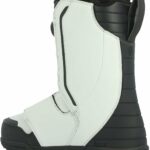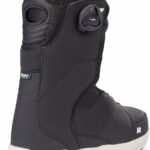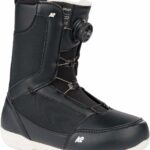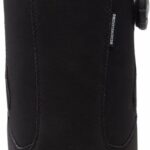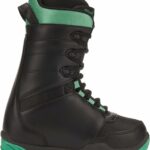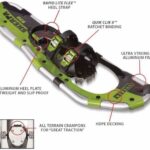You may be new to snowboarding or a seasoned pro, but you’ve probably noticed the options are split into men’s and women’s. You’re likely wondering about the differences between the two. Is it just a marketing scheme, or are there concrete distinctions that can cater to your skills and body type? In the article, “What Is The Difference Between Women’s And Men’s Snowboards?”, you’ll uncover the purposeful variances in these sports equipment designs, making your decision-making process a breeze.
Physical Characteristics of Men’s and Women’s Snowboards
If you’re new to the snowboarding world, you might be asking yourself why there are different snowboards for men and women. Well, the main reason lies in the physical characteristics of these two types of snowboards, which are designed specifically to match the different physical attributes of both genders, enhancing both performance and safety.
Understanding the physical differences
Physical distinctions between men’s and women’s snowboards are a result of the anatomical differences between the two genders. Men are generally heavier, taller, and have larger shoe sizes than women. Men’s boards, therefore, are usually longer, wider, and have a stiffer core to help support the additional weight and size. Women’s snowboards, on the other hand, are generally shorter, narrower, and have a softer core to suit their typical lighter and smaller frame.
Different snowboard materials for different genders
Snowboards are typically made of a combination of materials including wood, metal, and composites. Though men’s and women’s snowboards may use similar materials, the quantity and composition may differ, affecting flexibility, weight, and durability. Women’s snowboards often have a softer flex pattern, made possible through the less dense or thinner materials, while men’s boards are constructed with more robust, stiffer materials to accommodate the additional force they might be subject to.
Difference in Flexibility
Ever wondered why flexibility is important in a snowboard?
Definition of flexibility in snowboards
Flexibility in a snowboard refers to how much the board can bend, twist, or compress under pressure. It plays a crucial role in determining how easy or difficult the board is to control, how well it turns, and how it responds to different snow conditions.
Flexibility variations in men’s and women’s snowboard
Flex rating usually ranges from soft to stiff. Women’s boards tend to have a softer flex which makes them easier to maneuver. This is due to their typically lighter body mass, making softer boards more suitable for carving and making swift turns. On the other hand, men’s boards generally have a stiffer flex to accommodate their higher average body mass. Stiffer boards provide more stability and control at high speeds and are better for aggressive riders who like to ride fast and make big turns.
Board Size and Length Differences
The size or length of a snowboard is another significant factor in how a snowboard performs, and it differs between men’s and women’s versions.
Definition of board size and length
The size or length of a snowboard refers to how long the board is from nose to tail. It impacts the overall weight of the snowboard, its maneuverability, and how it responds to different snow conditions.
How gender affects board size and length
A rider’s gender significantly affects the ideal snowboard size. Men’s boards are typically longer and therefore, heavier due to men’s overall taller stature and larger foot size. The longer board provides necessary stability and control, especially at high speeds. Women’s snowboards, on the other hand, are typically shorter and lighter due to their smaller physical stature. This allows for easier turning and maneuverability, especially for beginners.
Gender-Specific Aspect of Sidecut and Width
When selecting a snowboard, you need to consider not just the length and flexibility but also the sidecut and width of the board.
Explanation of sidecut and width in snowboarding
Sidecut refers to how hourglass-shaped or straight the edge of a snowboard is. It significantly influences how sharply or widely a rider can turn. On the other hand, the width of the snowboard affects the rider’s control over the board and its stability.
Impact of gender on sidecut and width requirements
Men’s snowboards are usually wider and have a larger sidecut radius than women’s boards. This is to accommodate for larger foot size and provide stability during high-speed runs or big turns. Women’s boards, on the other hand, are typically narrower with smaller sidecut radii. This results in quicker turns and increased maneuverability, better suiting the often smaller foot size and lighter weight of women riders.
The Significance of Board Shapes
Board shape is a crucial factor in snowboard design that ensures the best performance for the rider according to their preferences and snow conditions.
Overview of board shapes
Snowboard shapes range from directional (ideal for rapid downhills), to twin (great for freestyle riding), to directional twin (a versatile combination of both). These shapes impact the board’s balance, maneuverability, and turning capabilities.
Comparing men’s and women’s board shapes
There is not a specific board shape for either gender. The shape preferred usually depends on the individual rider’s style and preference. However, manufacturers adjust certain aspects of these shapes such as the length, width, and flex based on the typical anatomical frames of both genders.
Binding Placement and Stance
Another critical aspect to consider when choosing a snowboard is the binding placement and stance.
Understanding bindings and stance in snowboarding
Binding is what keeps your feet attached to the board, and their placement can greatly affect your comfort and control over the snowboard. Stance, on the other hand, is your positioning on the snowboard which could be regular (left foot forward) or goofy (right foot forward).
Comparison of binding placement and stance in men’s and women’s snowboards
Though the specifics of binding placement and stance largely depend on the individual rider, the gender-specific design of snowboards often results in different recommended setups. Women’s snowboards typically have narrower stances, reflecting the typically narrower hip widths. Men’s boards, on the other hand, often require riders to have a wider stance for better control and performance, indicative of men’s generally wider body frame.
Impact of Rider Weight on Snowboard Choice
One of the golden rules of choosing a perfect snowboard is matching the board to the rider’s weight.
How rider weight impacts snowboard selection
Weight is one of the vital factors to consider as it greatly influences snowboards’ responsiveness and performance. Heavier riders need stiffer and longer boards to support their weight, while lighter riders do better with shorter, softer boards.
Weight variations in men’s and women’s snowboards
As men are generally heavier, men’s snowboards are typically designed to be sturdier and longer to support more weight. On the contrary, women’s snowboards are designed lighter and shorter to better cater to their typically lighter weight, ensuring easy maneuverability and control.
Snowboard Design and Aesthetics
We can’t overlook the role aesthetics play in the world of snowboarding.
Role of aesthetics in snowboard design
While the primary focus is always on performance and safety, the visual appeal of a snowboard can also play a role in a rider’s choice. The design and colors used can reflect a rider’s personality and complement their gear.
How snowboard design differs between sexes
Men’s snowboards often feature bold, dynamic designs and darker colors, while women’s boards tend to use softer colors and intricate designs. However, there’s a wide spectrum of designs in both categories, and ultimately, the choice is down to personal aesthetics preference.
Performance Differences in Men’s and Women’s Snowboards
Performance is where the rubber hits the road, or more accurately, where the board hits the snow.
Understanding snowboard performance
Performance in a snowboard relates to how well a board responds to a rider’s movements, how stable it is at different speeds, and how well it performs in various snow conditions.
Comparing performance of men’s and women’s snowboards
Because men’s and women’s boards are designed to cater for the different physical characteristics and abilities of each sex, their performance differs accordingly. Men’s snowboards are typically built for speed, stability, and power, while women’s snowboards are often built for maneuverability, agility, and lighter touch.
Making a Choice: Matching the Snowboard to the Rider
Picking the right snowboard can seem challenging, but when you know what factors to consider, it becomes much easier.
Factors to consider when choosing a snowboard
Consider your body size and weight, your snowboarding ability, and your preferred snowboarding style. Other factors to consider are the typical snow conditions you’ll be riding in, your budget, and, of course, your aesthetic preferences.
How to match a snowboard to a specific rider’s needs and skills
Once you are familiar with these factors, matching a snowboard to a specific rider becomes simpler. There’s no one-size-fits-all rule. A board that perfectly matches one person’s needs and skills may not work for another. Remember, the ultimate aim is to find a snowboard that enhances your snowboarding experience.
In conclusion, while there are distinct differences between men’s and women’s snowboards, these primarily cater to the typical physical differences between the sexes. It’s always the individual rider’s body size, experience, and preferences that are the most important considerations. Happy shredding!
- What Snowboard Bindings Should I Get? - January 23, 2024
- What Size Screws For Snowboard Bindings? - January 23, 2024
- How To Snowmobile On Water? - January 23, 2024

